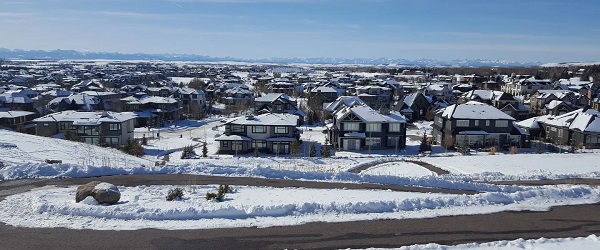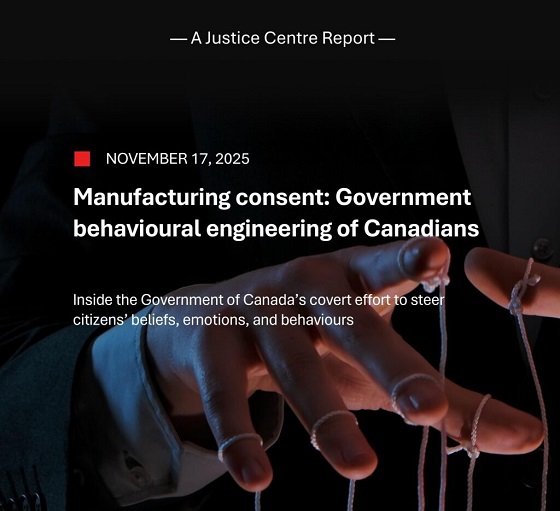Alberta
Highway 11 to be twinned from Sylvan Lake to Rocky Mountain House

Major highway upgrades keep Alberta moving
Budget 2024 includes $1.9 billion for planning, design and construction of major highway and bridge projects.
Alberta Transportation and Economic Corridors is investing in the provincial highway network to keep Albertans safe and on the move, now and into the future.
This investment enhances Alberta’s competitive advantage by building and improving our economic corridors to provide vital links to markets in and out of Alberta. These projects will increase the safety and efficiency of our provincial highway network, ensuring Albertans spend less time stuck in traffic and more time doing the things they love.
“Alberta’s highways connect families and friends and get local products to market. We all count on well-built roads to get where we need to go, and that is why we are investing in major upgrades to our road and bridge network. With smoother and more efficient traffic flows, families can spend less time on the road and more time together.”
Investing in upgrades to the provincial road and bridge network creates thousands of jobs, improves traffic flows and supports the development of the province’s major economic corridors. These investments in key projects are vital to ensuring communities across the province have the infrastructure needed to get their goods to new markets and to support the higher traffic counts that come with a growing population.
“Alberta is the fastest-growing province in Canada, so it’s imperative we get to work today planning, designing and building the highways and bridges we need for tomorrow. This investment from the Government of Alberta will strengthen the province’s transportation network and expand our economic corridors so we can build our businesses, boost our exports, and create good-paying jobs.”
As the province continues to grow, so does the need for new and improved highways to get more people and goods to their destination. Expanding Alberta’s economic corridors keeps the province connected, strengthens supply chains, and is important for economic growth and diversification. These investments will enhance Alberta’s competitive advantage, making it easier to transport goods in and out of the province.
By investing in highways and bridges, Alberta’s government is not just improving transportation; but also laying the groundwork for a stronger, more connected Alberta, ensuring prosperity for generations to come.
“ACC is supportive of the capital investments the province is making in major corridors across Alberta, including Highway 3. Improving our economic corridors is critical in ensuring we have stronger supply chains and more efficient movement of goods and people.”
“Strengthening and expanding economic corridors is a strategic priority for the EMRB. By working together, our 13 member municipalities are finding efficiencies so we can ensure people and goods can move seamlessly to, from and throughout the region. The EMRB would like to thank the Government of Alberta for its significant investment in this critical work. As the province’s population approaches five million, transportation networks have never been more important.”
Projects across the province that are receiving funding include:
- Highway 3 twinning, Taber to Burdett
- Highway 11 twinning, Sylvan Lake to Rocky Mountain House
- Safety and road improvements on Highway 881
- The Highway 22/1A interchange at Cochrane
- Highway 40 Twinning, south of Grande Prairie
- Highway 201 Bow River Bridge on southeast Stoney Trail
- Deerfoot Trail upgrades
- Terwillegar Expansion
Budget 2024 also looks to the future by investing $151.2 million over three years for 56 engineering projects, with $100 million in new funding over three years for 36 engineering projects to address future infrastructure needs as our province continues to grow. This will fund projects such as:
- Highway 60 capital improvements
- Highway 40 grade widening between Hinton and Grande Cache
- New intersection/alignment at Highway 16A and Range Road 20
- Highway 2 Balzac Interchange Replacement
- Highway 63 twinning, north of Fort McMurray
- Vinca Bridge replacement
Budget 2024 is a responsible plan to strengthen health care and education, build safe and supportive communities, manage the province’s resources wisely and promote job creation to continue to build Alberta’s competitive advantage.
Key Facts
- Alberta has a vast provincial highway network that includes more than 64,000 lane kilometres of highways, of which about 58,000 lane kilometres are paved.
- The province has more than 4,800 bridge structures, including river crossing bridges, overpasses and culverts.
More Information
Alberta
Albertans choose new licence plate design with the “Strong and Free” motto

First new plate in 40 years hit the road in 2026.
Albertans have chosen beautiful Moraine Lake in Banff National Park as the new design for the province’s licence plate.
After three rounds of voting and more than 240,000 votes cast, Albertans have spoken. The iconic Moraine Lake in Banff National Park will be featured on the province’s new licence plate.
Available in mid-2026, echoing the “Strong and Free” motto of our province, the plate reflects Alberta’s bold identity, economic strength and deep-rooted provincial pride. The motto’s inclusion on the licence plates will also serve as a nod to Canada’s national anthem and Alberta’s position as a strong and sovereign province within a united Canada.
“Albertans know who we are and what we stand for: we are strong, free, resilient and united by the natural beauty that defines our home. Moraine Lake is recognized around the world, and the fact that Albertans chose it makes this new plate deeply meaningful. Thank you to the Albertans who cast more than 240,000 votes and helped choose a design that showcases Alberta’s natural beauty and will stand as a proud symbol of our province for years to come.”
Moraine Lake is one of Alberta’s most iconic destinations, making it fitting that it be on the province’s licence plates for motorists around the country to see. The licence plate depicts the breathtaking panoramic view of Moraine Lake that perfectly displays the province’s beautiful Rocky Mountains, which attract visitors from around the world to Alberta.
“Having the iconic Moraine Lake on our licence plates is something we can all be proud to show off. Thank you to every Albertan who cast their vote in our tournament. Because of you, the beauty and strong and free spirit of our province will be on display for motorists across the country.”
If an Albertan wants to replace their current plate for the new licence plate once it is released, they can voluntarily pay a $28 fee. Alternatively, Albertans could obtain a new plate on their vehicle registration renewal date at no additional cost. Motorists may also continue using the previous licence plate once the new licence plate is brought onboard, provided it is still in good condition.
Quick facts
- Alberta’s current licence plate was designed in 1984.
- In 2021, Alberta began a transition from painted to reflective plates with the same design.
- The new design incorporates reflective technology to improve readability for law enforcement and automated systems in low-light conditions, and to meet international standards for visibility, legibility and counterfeit resistance.
Alberta
Edmonton and Red Deer to Host 2027 IIHF World Junior Hockey Championship

News release from the Red Deer Rebels and Hockey Canada
Hockey Canada, in partnership with the Canadian Hockey League (CHL) and International Ice Hockey Federation (IIHF), has announced that the 2027 IIHF World Junior Championship will be played in Edmonton and Red Deer, Alberta, from Dec. 26, 2026 to Jan. 5, 2027.
The successful bid represents a partnership between OEG Sports & Entertainment, the Red Deer Rebels, Hockey Alberta, the Cities of Edmonton and Red Deer, and the Province of Alberta, which made an $11 million commitment in February 2024 to host events in communities throughout the province.
“We are excited to bring the IIHF World Junior Championship back to Edmonton and Red Deer, and to give hockey fans in Alberta and across the country the opportunity to watch the top under-20 players compete for a gold medal right here in Canada,” said Dean McIntosh, senior vice-president of revenue, fan experience and community impact with Hockey Canada. “Both cities have been successful hosts of IIHF and other high-profile international events, and we know our partners in Edmonton and Red Deer will host a world-class event for players, teams, fans and volunteers alike.”
The 18,500-seat Rogers Place, home of the National Hockey League’s Edmonton Oilers and Western Hockey League’s Edmonton Oil Kings, will serve as the primary competition venue and host 17 games, including both semifinals and the medal games. The additional 14 games are set for the 7,050-seat Marchant Crane Centrium, home of the WHL’s Red Deer Rebels.
“Alberta is ready to welcome visitors from around the world for the International Ice Hockey Federation World Junior Championship,” said Andrew Boitchenko, minister of tourism and sport for Alberta. “This event celebrates the spirit of international competition and our province’s passion for hockey, while showcasing Alberta as a world-class destination for sporting events.”
“Edmonton is thrilled to co-host the IIHF World Junior Championship. This tournament is a fantastic opportunity to watch the world’s best junior hockey players right here in our community, showcasing emerging talent and inspiring a new generation of athletes,” said Andrew Knack, mayor of Edmonton. “Hosting world-calibre events like this also injects vital tourism dollars into our local economy, boosts our city’s vibrancy, and solidifies Edmonton’s reputation as a premiere sports tourism destination.”
Edmonton last hosted the IIHF World Junior Championship in August 2022, which was rescheduled from its traditional winter slot due to the COVID-19 pandemic. The gold medal game at the 2022 event was an instant classic, with Mason McTavish making a game-saving play in overtime and Kent Johnson netting the game-winner just over a minute later to give Canada its 19th World Juniors gold medal. The city also hosted in 2021 without fans, and was a co-host with Calgary for the 2012 edition of the event. Red Deer was a co-host for the cancelled 2022 World Juniors, and first hosted the annual under-20 tournament in 1995.
“We are proud to welcome the 2027 IIHF World Junior Championship back to our region,” said Jesse Smith, chief executive officer of Tourism Red Deer. “Red Deer’s love for the game and our hospitality will ensure an unforgettable experience for every athlete and fan.”
“The World Juniors give Edmonton an extraordinary opportunity to showcase our city on the world stage,” said Arlindo Gomes, vice-president of business development and venues management with Explore Edmonton. “This event strengthens our global reputation as a premier international sport destination while delivering more than $90 million in total economic impact to our community and inspiring the next generation of hockey players and fans. Edmonton loves hockey and we cannot wait to welcome global athletes and fans.”
Pre-tournament games for the 2027 World Juniors are expected to take place throughout Alberta, allowing fans across the province to watch the best junior hockey players from 10 countries before the puck officially drops in Edmonton and Red Deer on Boxing Day.
With demand for tickets expected to exceed availability, more information about a priority ticket draw and tournament ticket packages will be announced in the coming months. Fans looking to receive updates about the 2027 IIHF World Junior Championship as soon as they become available can sign up to become a Hockey Canada Insider today.
“On behalf of all of us at OEG Sports & Entertainment, we are proud to once again be hosting the IIHF World Junior Championship and the best young stars on the planet,” said Stu Ballantyne, president and chief operating officer of Rogers Place and ICE District. “The World Juniors is one of the most celebrated tournaments in hockey, and bringing it back to Edmonton is an honour for our city, our fans and our entire organization. ICE District and Rogers Place were built to facilitate and showcase the very best in sport and entertainment, and we look forward to working closely with Hockey Canada and other partners to deliver an unforgettable experience for the athletes, fans and the global hockey community.”
“We are beyond excited for our fans, partners and community to once again welcome the hockey world to Red Deer,” said Merrick Sutter, senior vice-president of the Red Deer Rebels. “This is a community that loves events, and we know their passion will be on full display once again next December.”
For more information on Hockey Canada and the 2027 IIHF World Junior Championship, please visit HockeyCanada.ca, or follow along through social media on Facebook, X, Instagram and TikTok.
-

 Alberta1 day ago
Alberta1 day agoNational Crisis Approaching Due To The Carney Government’s Centrally Planned Green Economy
-

 Alberta1 day ago
Alberta1 day agoAlberta Offers Enormous Advantages for AI Data Centres
-

 Alberta1 day ago
Alberta1 day agoCalgary mayor should retain ‘blanket rezoning’ for sake of Calgarian families
-

 Bruce Dowbiggin1 day ago
Bruce Dowbiggin1 day agoSports 50/50 Draws: Make Sure You Read The Small Print
-

 COVID-191 day ago
COVID-191 day agoNew report warns Ottawa’s ‘nudge’ unit erodes democracy and public trust
-

 Censorship Industrial Complex1 day ago
Censorship Industrial Complex1 day agoQuebec City faces lawsuit after cancelling Christian event over “controversial” artist
-

 espionage1 day ago
espionage1 day agoTrump says release the Epstein files
-

 Carbon Tax9 hours ago
Carbon Tax9 hours agoCarney fails to undo Trudeau’s devastating energy policies







